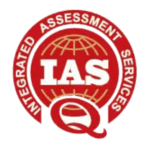CE Marking
CE Marking Certification
Integrated Assessment Services in Malaysia is a prominent CE Certification body, dedicated to providing CE Marking– European Conformity Certificates for products and packaging. This certification is of paramount importance for organizations intending to market their products within the European Market. In this comprehensive guide, we will delve into the significance of CE marking, the products that require it, the benefits it offers, and the seamless CE Marking process provided by IAS.
About CE Marking
CE marking is a European conformity certification that stands as a hallmark of compliance with health, safety, and environmental standards. It is a prerequisite for products to be legally sold within the European Market. The significance of CE marking extends beyond the European Economic Area (EEA), as CE-marked products gain recognition in the global market, making it a globally recognized symbol of quality and safety.
The acronym “CE” originates from the French phrase “Conformité Européenne,” which translates to European Conformity. It signifies that an organization’s product and packaging conform to the established European Legislation. CE marking represents not only compliance with European directives but also a commitment to the highest quality and safety standards.
Products Requiring CE Marking
A wide range of products across various industries necessitates CE marking. Some of the product categories that require CE marking include:
- Gas Appliances
- Toys
- Pressure Equipment
- Personal Protective Equipment
- Electrical Equipment
- Radio and Telecom Terminal Equipment
- Electronic Equipment
- Medical Devices
- Machinery
This list is not exhaustive, as CE marking is relevant to numerous other product categories. Ensuring CE compliance for your products is essential to facilitate their entry into the European market.

Benefits of CE Marking
Achieving CE marking for your products offers a multitude of advantages, both for your organization and your customers:
- Market Access: CE marking allows manufacturers to freely sell their products throughout the European Economic Area, eliminating barriers to trade.
- Enhanced Safety: It promotes the health and safety of consumers by ensuring that products meet strict quality and safety standards.
- Credibility: CE marking enhances product credibility, instilling confidence in customers and partners.
- Improved Sales: Compliance with CE standards often leads to improved sales and better customer satisfaction.
- Legal Compliance: CE marking certifies that your product complies with essential European health, safety, and environmental protection legislation.
- Enforcement Authority Support: It permits the withdrawal of non-conforming products by enforcement authorities, preventing substandard products from reaching consumers.
- Liability Reduction: CE marking can help reduce liability claims, timescales, and costs, ensuring a smoother market entry and operation.
Regulatory Examples for CE Marking
Different product categories fall under specific European directives and regulations, each with its set of requirements. Some examples of these directives include:
- Low Voltage Directive: 2014/35/EU
- Toy Safety: 2009/48/EG
- Building Materials: VO (EU) 305/2011
- Machines: 2006/42/EG
- Electromagnetic Compatibility (EMC): 2014/30/EU
- Personal Protective Equipment (PPE): 89/686/EEC
- Ecodesign Requirements for Energy-Using Products: 2005/32/EG
- Medical Products: 93/42/EEC
- Lifts: 2014/33/EU
- Active Implantable Medical Devices: 90/385/EEC
Each of these directives outlines specific criteria that products must meet to obtain CE marking for their respective categories.
How to Apply for CE Marking with IAS
IAS offers a straightforward and efficient process for organizations seeking CE certification for their products. Here are the steps involved:
- Step 1 – Determine European Legislation: Begin by identifying the specific European legislation applicable to your product.
- Step 2 – Identify Applicable Directives and Harmonized Standards: Identify the directives and harmonized standards that apply to your product category.
- Step 3 – Consult with Internal Teams: Collaborate with your internal audit team, internal quality department, and technical department to ensure a comprehensive understanding of the requirements.
- Step 4 – Prepare Application & Documentation: Compile the necessary documentation and complete the CE marking application.
- Step 5 – Submit the Application to IAS: Submit your CE marking application to IAS for review and certification.
IAS simplifies the CE marking process, guiding organizations through each step to ensure successful compliance with European standards. Additionally, once you successfully achieve CE marking, you can check the status of your certificate by visiting our CE marking certification search page!
Conclusion
CE marking is not only a regulatory requirement for products entering the European market but also a symbol of commitment to quality and safety. With CE certification from a trusted certification body like Integrated Assessment Services, organizations can access the European market with confidence, gain a competitive edge, and contribute to the safety and satisfaction of their customers. To learn more about CE certification and the CE marking process, please reach out to us at enquiry@iascertification.com or visit our CE marking frequently asked questions page. We are here to assist you on your journey to CE marking compliance.
Find out more about our CE Marking Audit procedure!
Also check out this blog on everything you need to know about CE Marking in Malaysia!
